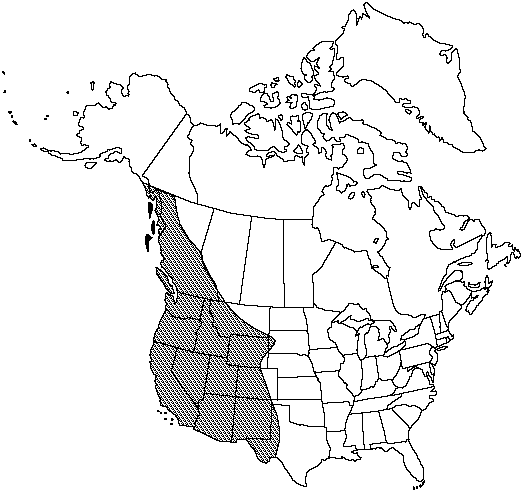Difference between revisions of "Pteridium aquilinum var. pubescens"
Native Ferns ed. 6 91. 1900.
FNA>Volume Importer |
FNA>Volume Importer |
||
| Line 20: | Line 20: | ||
}}<!-- | }}<!-- | ||
| − | --><span class="statement" id="st- | + | --><span class="statement" id="st-undefined" data-properties=""><b>Petiole </b>10–100 cm. <b>Blade</b> ovate-triangular to nearly pentagonal, 3-pinnate to 3-pinnate-pinnatifid, 30–200 × 15–100 cm; blades, rachises, and costae usually densely covered abaxially with abundant, contorted, lax, spreading hairs. <b>Pinnae</b> (proximal) triangular, distal pinnae oblong; terminal segment of each pinna ca. 4 times longer than wide, longer ultimate segments less than their width apart, ca. 1.5–5 mm wide. <b>Pinnules</b> at nearly 90° angle to costa; fertile ultimate segments adnate or equally decurrent and surcurrent. <b>Outer</b> indusia entire, pilose on margin and surface, hairs like those of axes.</span><!-- |
-->{{Treatment/Body | -->{{Treatment/Body | ||
| Line 48: | Line 48: | ||
|publication year=1900 | |publication year=1900 | ||
|special status= | |special status= | ||
| − | |source xml=https://jpend@bitbucket.org/aafc-mbb/fna- | + | |source xml=https://jpend@bitbucket.org/aafc-mbb/fna-data-curation.git/src/9216fc802291cd3df363fd52122300479582ede7/coarse_grained_fna_xml/V2/V2_458.xml |
|genus=Pteridium | |genus=Pteridium | ||
|species=Pteridium aquilinum | |species=Pteridium aquilinum | ||
|variety=Pteridium aquilinum var. pubescens | |variety=Pteridium aquilinum var. pubescens | ||
| − | |||
| − | |||
| − | |||
| − | |||
| − | |||
| − | |||
| − | |||
| − | |||
| − | |||
| − | |||
| − | |||
| − | |||
| − | |||
| − | |||
| − | |||
| − | |||
| − | |||
| − | |||
| − | |||
}}<!-- | }}<!-- | ||
-->[[Category:Treatment]][[Category:Pteridium aquilinum]] | -->[[Category:Treatment]][[Category:Pteridium aquilinum]] | ||
Revision as of 14:21, 27 July 2019
Petiole 10–100 cm. Blade ovate-triangular to nearly pentagonal, 3-pinnate to 3-pinnate-pinnatifid, 30–200 × 15–100 cm; blades, rachises, and costae usually densely covered abaxially with abundant, contorted, lax, spreading hairs. Pinnae (proximal) triangular, distal pinnae oblong; terminal segment of each pinna ca. 4 times longer than wide, longer ultimate segments less than their width apart, ca. 1.5–5 mm wide. Pinnules at nearly 90° angle to costa; fertile ultimate segments adnate or equally decurrent and surcurrent. Outer indusia entire, pilose on margin and surface, hairs like those of axes.
Habitat: In dry to moist woods and open areas in partial to full sun, forming abundant colonies
Elevation: 0–3000 m
Distribution

Alta., B.C., Alaska, Ariz., Calif., Colo., Idaho, Mont., Nev., N.Mex., Oreg., S.Dak., Tex., Utah, Wash., Wyo., Mexico in Baja California, Chihuahua, and Durango.
Discussion
Selected References
None.